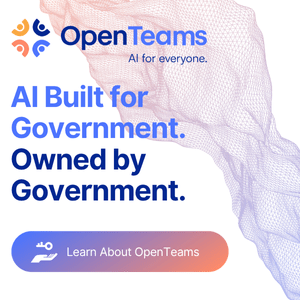An interesting and visionary trend is creating incredible benefits throughout the U.S., and the momentum is notable. It starts with the recognition that hundreds of traditional indoor shopping malls are struggling, and yet they represent properties that could be repurposed into new village-like communities at a time when housing shortages are critical issues.
Hundreds of public officials and community leaders are working with developers and private sector partners to redevelop shopping malls into mixed-use town-centers that combine housing, retail, open gathering space and transit connectivity. This sweeping trend recalls a time when commercial districts were the heart and soul of a community.
This shift is driven by two converging pressures: the weakening of many mall properties and a housing shortage that visionary public officials are determined to remedy. The resulting new community environments provide housing, walkable urbanism, and transit-oriented development (TOD).
One 2024 analysis outlines how many mall-to-mixed-use redevelopments strive to become 15-minute neighborhoods — locations where residents can reach housing, dining, retail, entertainment and transit in short walking or transit-time. In many of the newly created community centers, medical clinics are also located nearby. The repurposing of single-use malls into mixed-use hubs has been exceptionally successful and of high value to citizens. The examples that follow highlight upcoming collaboration opportunities for contractors and the shared design pattern of most of these new community center projects.
In Columbus, Ohio, more than a thousand citizens provided input to city officials as plans were being developed for a revitalization plan that included a vacant mall. The objective is to launch a multi-phase redevelopment strategy that will span approximately six square miles and be centered on the former Eastland Mall site. The plan, when completed, will include new housing, mobility improvements, public parks, and space for new community services. Early city investments currently total more than $20 million, but cumulative cost projections for the plan’s full implementation are expected to reach hundreds of millions.
One of the first major components is the new neighborhood community will be to convert the vacant building into a multi-service hub offering a food market, financial support programs, and health and social services. It will be connected to a newly created 78-acre public park with improved roadway connections. Future phases plan mixed-use redevelopment with affordable and senior housing, a new community center and library, and a transit hub to improve mobility across the area. Streetscape upgrades, road improvements, and expanded neighborhood parks are also part of the city’s long-term strategy. A search for a development partner will begin with an anticipated procurement in 2026 or 2027.
City officials in Manassas, Virginia, have announced plans to redevelop a shopping center that will include residential housing and various types of community spaces. This redevelopment currently carries a projected cost tag that exceeds $100 million. Early concept plans center on three primary components: mixed-use buildings, a diverse range of housing types, and a significant network of various types of public spaces.
The mixed-use buildings will include ground-floor retail and commercial space with multifamily residential units above. Planned townhomes, multifamily units, and a dedicated affordable-housing building will also be constructed. Public spaces will be enhanced, including a central park or plaza area, a linear greenway, and convenient pedestrian connections throughout the site. The project is entering the design phase, and construction is planned for 2027.
The former Global Mall in Nashville, Tennessee, will be redeveloped at a projected cost of more than $475 million. The project will include transforming the 650,000 square-foot structure along with 80 surrounding acres into a mixed-use district that focuses on new homesites.
Planning documents indicate that two mixed-use “villages” with housing, retail, dining, small-business space, cultural and recreational facilities, and potential medical or office uses will be created. The project will also include a day care center, a senior living facility, and other community services. Public amenities will include a large central green space, a community park, and an Arts and Innovation District with performance accommodation. Adjoining streets will be reconfigured, and a new Metro Transit Center will be constructed. The project is currently in the zoning and permitting phases. Officials are considering a public-private partnership for the redevelopment, but no solicitations of any kind have yet been released.
A $24.7 million city-led project in Glendale, California, will transform a former 2.3-acre closed retail site into a public park. In June 2025, the city council approved the land purchase, making way for planning efforts to convert the former retail site and attached parking lot into a neighborhood park that will expand public open space in south Glendale and provide amenities for citizens.
Planned improvements will include converting the asphalt into picnic lawns, playgrounds, and shaded walking paths. The current structure will be repurposed for indoor recreation with public restrooms and community, and it will be made even more attractive with drought-tolerant landscaping. The project will create a safe, walkable destination with new gathering spaces and improved pedestrian access. The work will be delivered in phases over several years. The initiative is currently in the pre-design planning phase, and councilmembers will review the final plan in late 2026. Once it is approved, procurement solicitations will be released.
These types of opportunities will be available over the next several years as public officials and developers continue to reimagine America’s malls. America’s malls are now seen in a completely different way – not as a fading retail relic, but as a foundation for new community life. As enclosed shopping malls lose tenants and anchor stores, municipalities are seizing the opportunity to turn these large, centrally located sites into mixed-use districts that serve far more than shopping needs. The push reflects both economic reality and civic ambition, and malls that once symbolized peak suburbia are now being transformed into places where people can live, prosper and connect.
Over the last several years, this redevelopment model has accelerated as communities face two urgent challenges – a deepening housing shortage and the loss of economic vitality because of underperforming retail corridors. Struggling shopping malls are ready-made platforms for transit-oriented neighborhoods, and they are being repurposed for multifamily housing, walkable streets, parks, entertainment, and retooled retail. Many new community housing hubs, built around what was once a shopping site, now have fitness centers, health services, co-working spaces, dining clusters, and even hospitality or light industrial uses located nearby. The increasingly common mix is resulting in long-term economic resilience, suggesting that outdated malls may be on the cusp of their most impactful reinvention yet.
Photo by Pixabay
This story is a part of the weekly Government Contracting Pipeline digital news publication. See more of the latest government contracting news here. For more national government news, check Government Market News daily for new stories, insights and profiles from public sector professionals.













